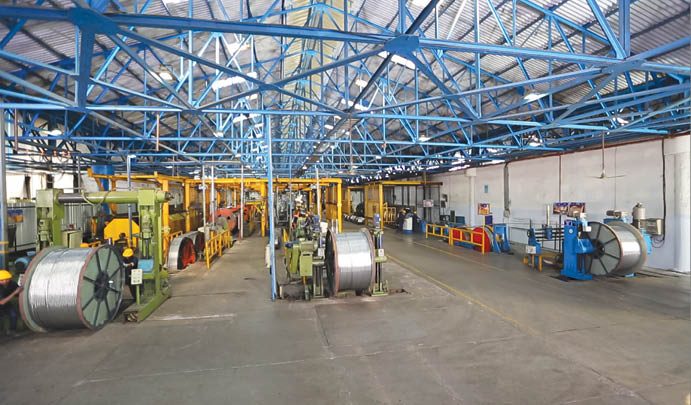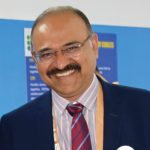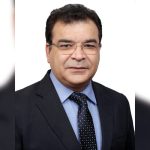During an exclusive interaction with Wire & Cable India, Mr. Manish Aggarwal, CEO of Conductor & Telecommunications Businesses at APAR Industries and Managing Director of APAR T&D Projects Pvt Ltd, reveals how APAR is aiming to play a pivotal role in reshaping the energy infrastructure in India and globally, by providing innovative, more energy-efficient and environmentally sustainable solutions.
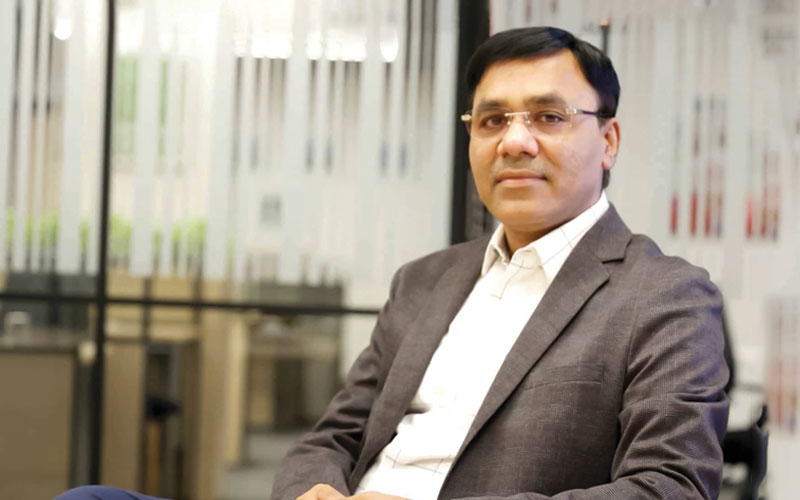
Wire & Cable India: What types of conductors do you manufacture? How do they differ in terms of properties and performance?
Manish Aggarwal: At APAR, we are committed to crafting the fundamental building blocks for the energy infrastructure, transportation and telecommunication sectors. Our mission is to create a world that is more energy-efficient, environmentally sustainable and safer. With more than 65 years of a commitment to excellence, we have consistently pushed the boundaries of innovation, emerging as a trusted leader, serving prominent companies in power generation, transmission, distribution, automotive, telecom, railways and defence sectors globally. Our reputation as a highly trusted manufacturer and supplier spans conductors, cables, specialty oils, polymers and lubricants.
The conductor business of APAR has been the cornerstone of its operations, undergoing significant portfolio expansion and growth over the years. We offer a diverse range of conductor products and solutions designed to meet the unique needs of the power sector globally. Our product range includes conventional, high-performance and advanced HTLS T&D conductors; railway overhead conductors that cover the entire spectrum of bare wires used in electrically operated railway infrastructure; CTC/PICC enamelled strips widely used in transformers, generators and as winding material in the motor industry; copper rods/wires/busbars/strips catering to switchgear industries, electrical panel manufacturers and electrical substations; aluminium, alloy rods & specialty wires catering to cable industry, fitting & accessories; and Optical Ground Wires (OPGW) extending across power grid management, telecommunication, renewable energy integration & smart infrastructure.
Our T&D portfolio includes conventional conductors like AAC, AAAC, ACSR, AACSR and ACAR, offering high current capacity, high tensile strength, enhanced corrosion resistance, better sag properties and strength-to-weight ratios, which are suitable for low to medium voltage lines in urban areas, long-distance transmission in remote or rugged terrains, and even in challenging environmental conditions.

We have developed advanced conductor designs like POWER-ZAD, which feature Z-shaped interlocked wires providing superior aerodynamics & reliability, preventing power line collapse during extreme weather conditions.
We have high-performance conductors like AL59, TACSR and ACSS, which can operate at higher temperatures (up to 250 degree C), offering high ampacity. These are suitable for regions with higher ambient temperatures or corrosive conditions.
Our advanced HTLS conductors such as INVAR, ACCC, ACSS and Gap type (GZTACSR) have enhanced ampacity, lower losses, minimal sag and better thermal performance (up to 210 degree celsius), which are suitable for both new lines and reconductoring applications. These conductors are a key component in modernization of power grids and pursuit of sustainable energy goals.
We offer T&D conductors in various configurations such as round, trapezoidal and Z-shaped wire profiles to meet specific application requirements, concentric-lay stranded conductors (up to 127 strand), along with surface finish options (specular surface finish or non-specular dull finish to reduce glares), to suit specific operational and environmental requirements. We have been innovating in twisted pair conductors, ideal for specialized applications, which provide more reliable and durable solutions for high-tension and specific environmental conditions and help reduce line costs by permitting lower sag or longer spans.
For distribution networks, our AAC, AAAC, ACSR, OPGW and medium-voltage covered conductors (MVCC) improve safety, extend the lifespan of lines and reduce maintenance requirements, particularly in urban, coastal and high-altitude areas. The key advantage of our product range lies in its adaptability. Whether the focus is on electrical and thermal performance, durability in extreme environments or cost-efficiency, we deliver solutions that enhance the reliability and efficiency of power networks.
Watch: Top Cable Companies in India
WCI: What recent innovations or advancements have you developed in your technology for enhanced efficiencies in power transmission? Have you incorporated these into your products? How do they improve performance or reduce costs?
MA: APAR has consistently driven innovation to deliver solutions that enhance efficiency, performance and sustainability, reducing costs while tackling critical environmental challenges. We have developed advanced conductor designs like POWER-ZAD, which feature Z-shaped interlocked wires. It provides superior aerodynamics & reliability, preventing power line collapse during extreme weather conditions. Our twisted pair conductors are suitable for high-tension and specific environmental conditions.
The ultra-low-sag (ULS) conductors can transfer 400kV equivalent power on a 220kV network. Our composite core conductors, in collaboration with CTC Global, USA, offer higher conductivity, better power transfer and lower power losses, particularly in 11kV to 33kV sub-transmission and distribution lines. The KTAL alloy conductors can operate up to 150 degree celsius without deterioration, improved strength-to-weight ratios & reduced wind load on towers, making them suitable for large-crossing sections in mountainous and hilly terrains.
Our ultra-high strength aluminum clad steel wires offer superior durability, ensuring optimal performance under high loads and improving line reliability. We also have low loss ACSR (LL-ACSR) conductors, high capacity Cu-Ag contact wire, Cu-Mg catenary wires for railways and conductors with high emissivity characteristics, allowing them to operate at lower temperatures. This design maximizes thermal capacity, reduces electrical losses and minimizes capital investment. The OPGW 144/288F and Optical Phased Conductor (OPPC) technologies combine power transmission with data capabilities, enabling real-time monitoring and supporting smart cities, 5G, and IoT infrastructure.
Some of our other new product development initiatives include coated conductors that promise reduced line losses, increased conductor capacity & improved durability in challenging environments and reconductoring solutions with HTLS using emergency restoration systems (ERS). Additionally, we are working on end-to-end capability turnkey solutions for MVCC and an enhanced version of Aluminum Carbon Composite Core Conductor (ACCC).
Our investment in state-of-the-art testing facilities enables us to rigorously test conductors and cables in line with international standards. Backed by rigorous testing at our ISO/IEC 17025-2017 accredited lab, our innovations ensure superior reliability and durability. Through continuous research and development, we are committed to providing cutting-edge products & solutions anticipating future challenges, that optimize energy use, enhance the longevity of infrastructure and reduce operational costs across the power transmission & distribution sectors.
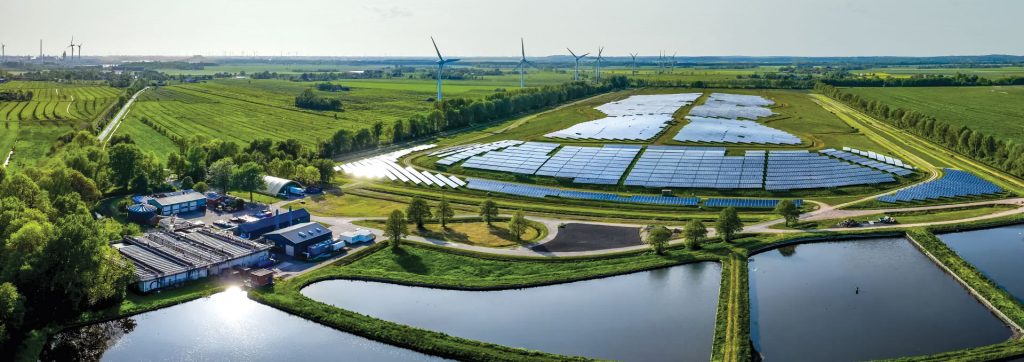
WCI: What quality control processes are in place to ensure the cables and/or conductors meet industry standards and meet reliability and safety benchmarks for various environmental conditions?
MA: APAR implements a comprehensive quality control strategy that spans right from rigorous design validation, high quality raw material selection, frequent supplier audits and stringent checks at the incoming stage. Through well-defined SOPs that encompass rigorous testing and inspection protocols, with extensive testing at each stage, our conductors and cables are built to meet the highest standards of safety, performance and reliability, no matter the environmental conditions in which they are deployed.
We have advanced testing and research facilities compliant to national and international standards, including IEC 738 and IEEE 1138. We have a fully equipped laboratory accredited with ISO 17025-2017, recognised by the Government of India. APAR’s testing laboratory specialises in physical, electrical, mechanical and chemical testing on overhead bare aluminium conductors, including new-generation conductors (INVAR/GAP/ACSS/ACCC), OPGW cables, corrosion-protection greases for bare overhead conductors and their constituent components.
By implementing comprehensive evaluations across all stages of production, APAR ensures that its conductors and cables deliver consistent and long-lasting performance and remain safe & reliable even under diverse environmental conditions.
WCI: What value-added services, such as engineering support, installation guidelines and maintenance do you provide to customers in the field?
MA: At APAR, we provide comprehensive value-added services that go beyond just delivering products. Through our specialized turnkey solutions, we offer end-to-end support, which means managing the entire process from conceptualization and design to erection, to our customers in both transmission and distribution sectors.
We are a market leader in reconductoring solutions, which maximize transmission capacity within existing corridors, minimize land use and ensure the lowest cost of ownership. We’ve successfully executed over 165 turnkey reconductoring projects. As part of reconductoring works with HTLS, APAR has supplied more than 63,000 km conductors, completed line length of 5,000+ ckm and carried out augmentation for 95 substations. With respect to OPGW-Live Line reconductoring works & telecom integration, we have supplied more than 48,000 km, completed OPGW length of 24,000+ km and completed 140+ telecom integrations.
To support these projects, we’ve invested in advanced tools, specialized equipment like tensioners & pullers and extensive training programs for our workforce. We have certified master installers for ACCC conductor installation to minimize risks and keep projects on schedule. Each project is managed with a strong emphasis on safety, guided by dedicated safety supervisors on-site. Additionally, we offer Medium Voltage Covered Conductor (MVCC) end-to-end turnkey solutions up to 33kV lines, with high ampacity, reduced line losses and enhanced safety. We are executing a couple of projects for state power distribution companies and have supplied over 16,200 km.
Also Read: Universal Cables: Pioneering Seamless Aluminium Sheathing EHV Cables in India
WCI: Which key markets does your company primarily serve? What measures are you implementing in production to meet growing demand?
MA: We serve over 100 countries, catering to a diverse range of major markets, including India, North America, Africa, Europe, and the Middle East. In FY24, the domestic-export ratio stood at 45:55. Our unique manufacturing setup is a combination of state-of-the-art equipment, high speed machines, precise controls and advanced technologies, including industry 4.0, which helps to meet the evolving and diverse demands of the modern energy sector.
Our manufacturing facilities are strategically located in Silvassa & Khatalwada, Gujarat and Jharsugda & Lapanga in Odisha, which enable us to produce world-class quality in massive capacities. These facilities are ISO 9001, ISO 14001, ISO 45001, ISO 17025, IS 5484, IS 733, IS 617, IS 613, IS 1897, IS 398 (Part 1, Part 2, Part 4, Part 5,Part-6) certified. We maintain total in-house control over the design, manufacturing and testing process, enabling us to guarantee innovation and quality, while maintaining cost competitiveness. Our facilities are designed to prioritize adaptability and sustainability, enabling us to address the challenges of a rapidly changing energy landscape, while providing reliable and future-ready solutions for our customers.
We have undertaken strategic capex to increase production capacity, improve productivity, reduce cost and enhance capabilities to manufacture, test and install high value-added and sustainable products. The capacity is expected to nearly double for copper CTC/PICC and AL-59/AAAC conductors and increase by 166 percent for copper busbar in FY25 (from FY23 levels).
Looking ahead, we are targeting increased market penetration in emerging economies, while strengthening our foothold in established markets, supported by our advanced manufacturing capabilities and commitment to innovation. Globally, we are also targeting partnerships with various utilities and EPCs to expand our market presence.

APAR is working towards 50 percent GHG emissions intensity reduction by 2030. The share of Renewable Energy (RE) in its overall energy mix increased from 4 percent in FY23 to 7.3 percent in FY24.
WCI: What are the key ESG initiatives currently being implemented by APAR?
MA: APAR has integrated sustainability into its core business operations, adopting eco-friendly processes, promoting social responsibility and aligning company values with sustainable development goals. Our manufacturing plants are certified for Integrated Management Systems of Quality, Environment, Health and Safety as per ISO: 9001, 14001 and 45001 standards.
Some of the key initiatives at an organization level include decrease in GHG emissions intensity by 5 percent in FY24 for our cable & conductor businesses, reduction in absolute water footprint from 328,325 KL in FY23 to 314,642 KL in FY24 and water footprint intensity from 22.88 to 19.48 (KL/Rs Cr) in FY24. The company managed to do 61,497 KL of rainwater harvesting through aquifer recharge during FY24.
The initiatives further include the introduction of ESG-linked KRAs for key executives for FY25 and formation of a board-level committee Corporate Social Responsibility and Sustainability (CSR&S) Committee to enhance the focus on sustainability.
APAR is working towards 50 percent GHG emissions intensity reduction by 2030. The share of Renewable Energy (RE) in its overall energy mix increased from 4 percent in FY23 to 7.3 percent in FY24. Work is also going on to increase the share of RE further through commissioning of wind-solar hybrid energy projects (3.30 MW wind-turbine and 2.80 MWp of solar energy), which is expected save 10,000 tCO2e GHG emission per year
The company prepared its first TCFD (Task force on Climate related Financial Disclosures) report in October, 2024. It is committed to the SBTi, pledging to set science-based emissions reduction targets. APAR is focusing on reducing value chain emissions through increased engagement with suppliers. The company did climate risk assessment and scenario analysis (as per SSP1-RCP2.5, SSP5-RCP8.5 and Net Zero 2050), and quantification of identified risks.
APAR was awarded a score of ‘B’ (management level) by CDP in 2023 for the disclosures. We achieved Silver Status by renowned sustainability rating platform EcoVadis in October, 2023.
From a conductor business perspective, we have several low carbon products. Our ACCC (Aluminium Conductor Composite Core) conductors offer significant advantages in material efficiency, reduced energy consumption during manufacturing, improved transmission efficiency, extended service life, and favourable results in lifecycle assessments, contributing to lower greenhouse gas emissions. Our high performance HTLS conductors can transmit double the power and are more energy-efficient due to lower resistance. They require less aluminium for equivalent conductivity, leading to reduced carbon footprint and greenhouse gas emissions, along with moderate energy consumption.
WCI: Tell us about your major orders that you have bagged recently.
MA: APAR recently secured significant orders from major TBCB players in India, including PGCIL and leading private developers. Additionally, we have won orders for CTC conductor supply for 30 jobs of 765kV rating transformers for a government-owned electrical technology company and copper OHE conductors for electrification from various zonal railways. We received orders for reconductoring a 66kV network for a state transmission utility to ensure uninterrupted power supply to farmers in Jamnagar, Junagadh and Anjar circle. This reinforces our position as a trusted partner in the domestic transmission sector. On the global front, we have received notable orders from renowned EPCs for key projects across Europe, Africa and North America, reflecting our strong capabilities and reliability in international markets. These orders highlight our ability to deliver high-quality solutions that meet the evolving demands of the power transmission industry worldwide.
WCI: What are some of the major challenges you are experiencing in the market?
MA: The Government of India has set an ambitious target of achieving USD one trillion merchandise exports by 2030. The power sector is expected to contribute significantly to help achieve this target. However, it is facing challenges in navigating the dynamic and evolving global trade landscape, such as diminishing export incentives, logistical challenges and high MJP/metal and price fluctuations.
The availability of robust, sea-worthy containers, geopolitical issues and the Red Sea crisis have resulted in levy of peak season surcharges (PSS), increase in ocean freight & TAT and congestion at transhipment ports (e.g. Singapore, Colombo) increasing the TAT. Reduced export incentives make it increasingly difficult to compete with countries like China, and in Europe, Americas, Africa and Australia, where manufacturers benefit from more robust support.
Increase in raw material costs affects pricing stability, profit margins and competitiveness in the market. Additionally, the market is experiencing some challenges domestically, which is impacting the business significantly. Delay in getting approvals for power shutdown is impacting the reconductoring projects.
Factors such as non-availability of 24×7 supply of quality power to manufacturing facilities, for example in Silvassa and in Odisha, along with slower adoption of new and greener products & solutions, require us to continuously innovate, improve operational efficiency and collaborate closely with the stakeholder ecosystem to address these challenges effectively.
WCI: Where do you see the market headed in the next five years, in terms of growth, innovations, technology integration and new challenges? How do you see yourself in that landscape?
MA: The global transmission and distribution (T&D) market is poised for robust growth in the next five years, expected to grow at a CAGR of 6-7 percent.
Global Growth
Globally, the decarbonisation of power generation is spurred by climate commitments and the rise of renewables, which is projected to account for ~50 percent of the global electricity mix by 2030.
The International Energy Agency (IEA) estimates that achieving net-zero emissions will require USD 4.5 trillion in clean energy investments by 2030, and the need to add / replace ~50million miles of transmission lines by 2040 to meet climate goals and achieve energy security. This expansion, equivalent to the current global grid, will require over USD 600 billion annually in investments by 2030, which is double the current levels.
Transmission lines are vital to connecting renewable energy projects such as the 1,500GW of clean energy awaiting grid connection worldwide and mitigating power bottlenecks. Countries like India are setting a strong example, investing significantly in green energy corridors, mega solar parks, and wind power zones while aiming for 500 GW of renewable energy capacity by 2030. Additionally, inter-continental grid linkages are being explored to leverage time differences and optimize energy distribution globally.
Innovation & Key Challenges
Modernizing transmission grids is driven by the need to incorporate advanced solutions such as energy storage systems, digital technologies, and real-time markets to effectively manage grid imbalances. Key industry-shaping factors include investments in renewable energy transitions, initiatives like One World, One Sun, One Grid (OSOWOG), large-scale HVDC projects, and the rapid urbanization and industrialization in developing countries. Furthermore, the need to modernize aging infrastructure, rising adoption of EVs, proliferation of new data centers, and technological advancements aimed at reducing energy losses are fuelling the demand for innovative solutions in the T&D sector.
However, challenges persist, including lengthy permitting processes, right-of-way issues, and environmental constraints. Intra-state transmission networks face inefficiencies, inadequate investment, and limited access to financing. While building renewable energy plants takes less time, constructing transmission lines remains complex and requires significant government support.

We’ve successfully executed over 165 turnkey reconductoring projects. As part of reconductoring works with HTLS, APAR has supplied more than 63,000 km conductors, and on OPGW Live-Line reconductoring works, we have supplied more than 48,000 km.
India’s Landscape
India’s National Electricity Plan (October 2024) outlines the planned addition of 1,91,474 ckm of transmission lines and 12,74,185 MVA of transformation capacity at 220 kV and above voltage levels by 2032, highlighting the immense potential for infrastructure expansion. By leveraging public-private partnerships, significant investments, and progressive regulatory reforms, India is setting a benchmark for efficient transmission development. As electricity demand continues to rise, these strategic initiatives and innovative solutions will play a pivotal role in accelerating the energy transition and overcoming the operational challenges of transmission infrastructure.
APAR’s Positioning
In this evolving landscape of T&D sector, APAR Industries is uniquely positioned to lead the transformation by offering a diverse portfolio of solutions such as high-performance conductors (HPCs), including high-temperature low-sag conductors(HTLS), covered conductors, continuous transposed conductors (CTCs), EHV cabling solutions, Optical Phase Conductors (OPPC), coated conductors and specialized turnkey solutions to enhance ampacity, lower losses and ensure longevity. By aligning its operations with global energy goals and focusing on sustainability and carbon reduction, APAR plays a pivotal role in reshaping energy infrastructure and ensuring a cleaner and more efficient future.



